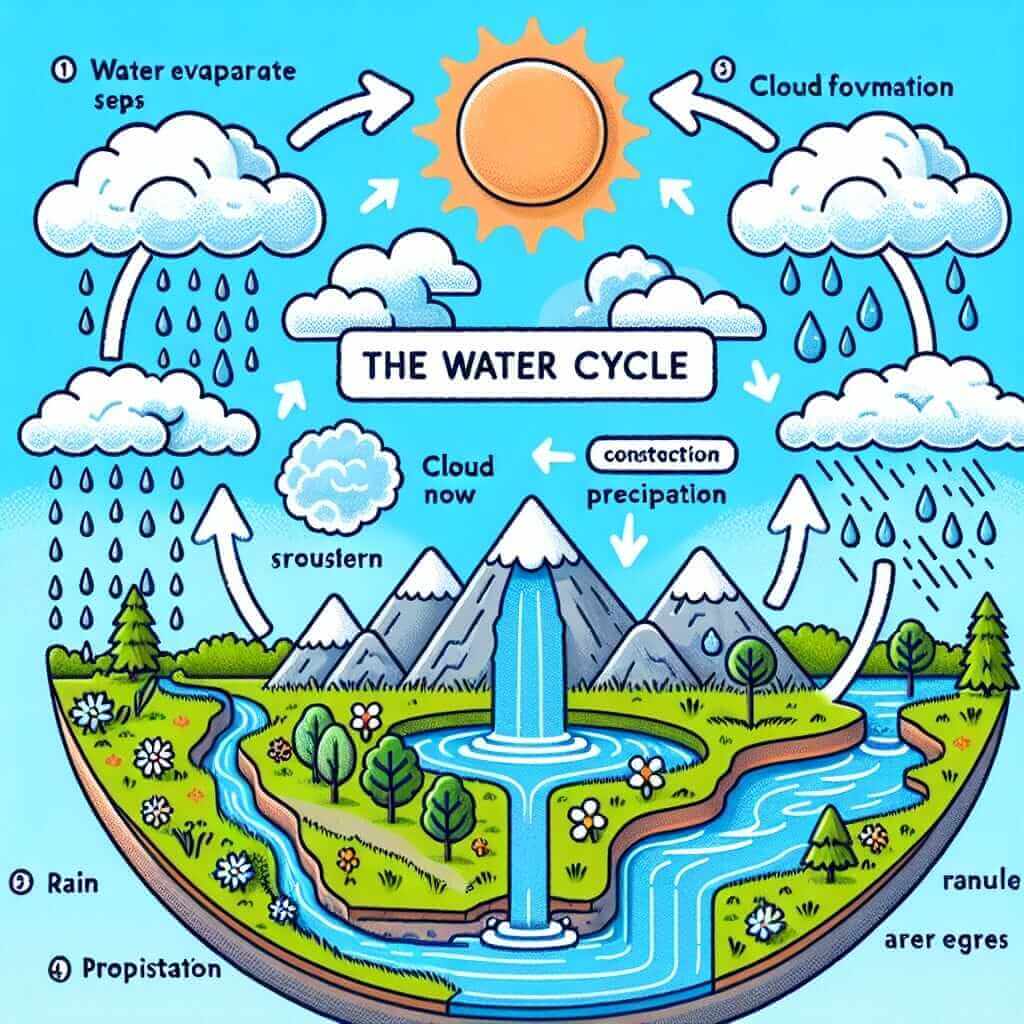Introduction: Mastering IELTS Process Descriptions
In the IELTS Academic Writing Task 1, you may encounter a diagram illustrating a process. This can be anything from the life cycle of a butterfly to the manufacturing process of a car part. Understanding how to effectively describe these processes is crucial for achieving a high band score. This guide will equip you with the necessary skills and strategies to confidently tackle IELTS process diagrams.
Understanding the Task: What IELTS Expects
Before diving into the specifics, it’s vital to grasp what IELTS examiners look for in a good process description:
- Clear Overview: A concise summary of the process, highlighting the main stages and overall purpose.
- Logical Sequencing: A coherent and chronological description of each step in the process.
- Accurate Vocabulary: Precise language to describe actions, materials, and transformations.
- Grammatical Range: Use of a variety of grammatical structures, including passive voice and sequencing words.
Deconstructing the Process Diagram
-
Analyze the Visual: Spend a minute carefully examining the diagram. Identify the starting point, end point, and key stages. Look for any inputs, outputs, and changes in state.
-
Identify Key Vocabulary: Jot down specific verbs, nouns, and adjectives that accurately represent the actions, materials, and transformations within the process.
-
Plan Your Response: Organize your thoughts into a logical structure:
- Introduction: Paraphrase the question and provide a general overview of the process.
- Body Paragraphs: Describe each stage of the process in detail, using sequencing words (firstly, subsequently, finally) to show progression.
- (Optional) Conclusion: Briefly summarize the outcome or final product of the process. This is not always necessary but can be beneficial for complex processes.
Illustrative Example: The Water Cycle
Let’s say your IELTS Task 1 presents a diagram of the water cycle. Here’s how you can apply the steps above:
1. Analyze: The diagram shows the continuous movement of water on, above, and below Earth’s surface. Key stages include evaporation, condensation, precipitation, and collection.
2. Key Vocabulary:
- Verbs: evaporate, condense, precipitate, collect, flow
- Nouns: water vapor, clouds, rainfall, groundwater
- Adjectives: solar, atmospheric, liquid, gaseous
3. Structure:
-
Introduction: The provided diagram illustrates the cyclical process of the water cycle, highlighting the continuous movement of water in various states.
-
Body Paragraph 1: Initially, solar energy heats the surface water, causing it to evaporate and transform into water vapor. This lighter-than-air vapor then rises into the atmosphere.
-
Body Paragraph 2: As the water vapor ascends, it cools and condenses around tiny atmospheric particles, forming clouds. Subsequently, these clouds release the accumulated moisture in the form of precipitation, such as rain or snow.
-
Body Paragraph 3: Once precipitation reaches the Earth’s surface, it either flows across the land as runoff, eventually returning to rivers, lakes, and oceans, or it infiltrates the ground, replenishing groundwater sources.

Essential Tips for Success:
- Practice Makes Perfect: Regularly practice describing different types of processes. You can find sample diagrams online or in IELTS preparation books.
- Master the Language of Change: Familiarize yourself with a range of verbs and adverbs that indicate change, sequence, and transformation.
- Pay Attention to Time: Use appropriate tenses (present simple is most common for processes) and sequencing words to accurately reflect the chronological order.
- Proofread Carefully: Allocate time to review your work for any grammatical errors or inconsistencies in your description.
Conclusion
Mastering the art of describing a process in IELTS Writing Task 1 requires a systematic approach and consistent practice. By understanding the task requirements, analyzing the diagram carefully, employing precise vocabulary, and structuring your response logically, you can significantly improve your chances of achieving a desirable band score. Remember, clarity, accuracy, and a good command of vocabulary are key to success.